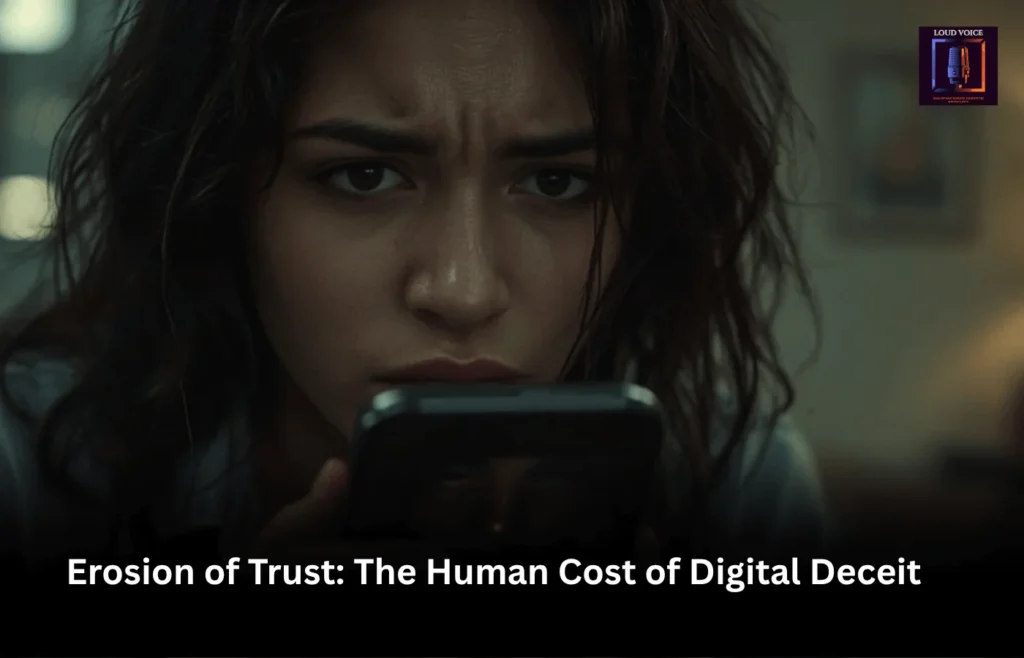Introduction
The digital world is currently experiencing a technological tipping point, one where the tools of creative expression are being weaponized into instruments of highly effective, scalable crime. The focus of this growing threat is the alarming proliferation of “Deepfake as a Service” (DaaS)—sophisticated platforms offering the creation and distribution of hyper-realistic forged media for illicit ends. A surge in financially motivated cybercrimes, from CEO fraud to elaborate extortion, has triggered an emergency response: the formation of a massive, multi-national law enforcement initiative. This investigation details the scope of the crisis, the mechanics of the DaaS economy, and the global strategy to contain a crime wave threatening the fundamental fabric of digital trust.
Background and Core Event Details
The crisis reached a fever pitch over the last quarter, marked by several high-profile incidents that exposed the operational scale of DaaS. The Who, What, Where, When, and Why of the current situation reveal a transnational threat ecosystem.
What: The core event is a massive, coordinated increase in cybercriminal activity utilizing DaaS platforms. These services commodify advanced generative AI, offering bespoke deepfake generation—audio, video, and text—often for impersonation, financial fraud, and disinformation campaigns.
Who: The perpetrators are not single actors but highly organized, agile criminal networks operating on the dark web and increasingly, on encrypted messaging platforms. They are leveraging the barrier-to-entry reduction provided by DaaS, allowing even low-skilled criminals to deploy highly convincing, untraceable attacks. The targets are both high-net-worth individuals and major international corporations.
When: While deepfakes have existed for years, the exponential growth in quality and the criminal service-model shift accelerated dramatically in the last six to nine months, coinciding with the public release of more powerful generative AI models.
Where: The DaaS infrastructure is globally distributed, often hosted in jurisdictions with weak cyber-regulation. The attacks, however, are focused primarily on North America, Western Europe, and high-growth markets in Asia, targeting financial and political stability.
Why: The motivation is overwhelmingly financial. DaaS offers unprecedented return on investment for criminals. A forged video of a CEO, for example, can unlock millions in fraudulent wire transfers, while personalized extortion deepfakes are proving frighteningly effective.
Detailed Investigation & Impact Analysis
Immediate Industry Reactions and Cyber Defense Shifts
The financial and technology sectors were the first to sound the alarm, having borne the brunt of initial attacks. The immediacy of the threat has caused a rapid, costly pivot in cybersecurity strategy, moving from reactive defense to proactive, AI-driven detection.

“We have seen a seismic shift in attack sophistication,” states Dr. Evelyn Reed, Chief Information Security Officer for GlobalBank Group, in an exclusive interview with our investigative team. “The human element, the ‘trust’ factor that traditional social engineering relied upon, is now the greatest vulnerability. Our training materials are useless against a perfectly cloned voice or video. We are investing heavily in ‘digital provenance’ systems to cryptographically verify all executive communications.”
The insurance industry is also reeling. Claims related to DaaS-facilitated fraud, including sophisticated ‘Synthetic Identity Fraud,’ have soared by over $4 billion globally in the past year alone. This has led to skyrocketing premiums for corporate cyber-insurance and a new wave of exclusions for losses related to unverified digital communications.
Long-Term Societal and Economic Shifts
The implications of the DaaS economy extend far beyond corporate balance sheets; they strike at the heart of societal trust and the integrity of democratic processes.
Explore Regulatory and Governmental Challenges
Governments face an existential dilemma: how to regulate a rapidly evolving technology without stifling innovation. The current patchwork of laws is proving utterly inadequate. The core challenge is attribution; deepfakes are often created and distributed across multiple international borders, complicating the already difficult process of digital forensics.
The new initiative, provisionally named the “Global Digital Integrity Task Force (GDITF),” represents an unprecedented level of international cooperation. It brings together Interpol, Europol, the U.S. Federal Bureau of Investigation (FBI), and cyber agencies from over twenty nations. Their initial mandate is to map the DaaS supply chain—from the AI developers providing the open-source base models to the dark web payment processors.
Incorporate The Required Authoritative Source References/Quotes
The urgency of the situation is reflected in high-level statements. “The use of generative AI for mass-scale fraud constitutes an economic weapon,” stated Director Marcus Klein, Head of the European Union’s Cybercrime Agency (EUCA), during a recent press conference announcing the formation of the GDITF. “We are committed to disrupting the financial mechanism of these DaaS operations, treating cryptocurrency laundering that enables these crimes with the same severity as international drug trafficking.”
Further substantiation of the threat’s technical sophistication comes from academia. A recent peer-reviewed study published by Stanford University’s Center for Internet and Society, titled ‘The Commodification of Deceit,’ detailed how current-generation DaaS models require less than ten seconds of source audio or video to generate convincing, near-real-time deepfakes. The study concluded that “The cost to produce a believable, targeted deepfake has dropped by 95% in the last 18 months, crossing the threshold from a specialized tool to a widely available, mass-market criminal commodity.” This data underscores the economic shift driving the surge.
Analyze The Consumer/User Perspective and Implications
For the average citizen, the DaaS surge is fueling a profound sense of “digital paranoia.” People are increasingly skeptical of even genuine media, a phenomenon known as the “liar’s dividend.” This has immediate effects on personal security and media consumption. Sophisticated vishing (voice phishing) attacks, where criminals use DaaS to clone the voice of a relative in distress to elicit emergency funds, are now a daily occurrence.

The primary implication for users is the urgent need for a radical shift in personal security protocols. Multi-factor authentication is no longer sufficient; individuals must adopt “out-of-band verification,” using pre-agreed-upon codewords or secondary communication channels to confirm the identity of anyone—even a family member—requesting sensitive information or funds over an unfamiliar digital medium.
Details of the Historical Context Leading to the Breakthrough
The current crisis is the culmination of three parallel technological and social trends.
First, the Advancement of Generative AI: The public release of highly performant large language models (LLMs) and diffusion models provided the foundational technology. The ‘breakthrough’ moment was the shift from models requiring vast datasets and high-end computing to models optimized for speed and efficiency that could run on off-the-shelf hardware or, more commonly, cheap cloud-computing rentals.
Second, the Rise of the As-a-Service Model: Cybercrime has professionalized. Just as legitimate software migrated to a Software-as-a-Service model, criminals adopted ‘Malware-as-a-Service’ and now DaaS. This subscription-based economy makes crime highly profitable and scalable, reducing the need for criminals to be experts in the underlying technology.
Third, the Collapse of Digital Gatekeeping: The widespread use of social media and public digital footprints provides the perfect training data—high-quality audio, video, and text—needed to create convincing deepfakes of anyone. Every public post is now a potential data point for a DaaS criminal. The historical shift from privacy by obscurity to mandated digital transparency has provided the fuel for this fire.
Conclusion
The DaaS-driven crime wave is not a temporary spike; it is the new normal of the digital landscape. The formation of the Global Digital Integrity Task Force is a necessary, albeit late, acknowledgement that this threat requires a unified, global defense. The fight will be waged on two fronts: law enforcement’s attempt to dismantle the DaaS economy through targeted operations against the criminal infrastructure, and the technology sector’s race to develop “authenticity infrastructure”—systems that can prove a piece of media is real, rather than just trying to detect what is fake.
The outlook is one of cautious, tech-driven vigilance. The next 18 months will be critical, determining whether law enforcement can move faster than the exponential growth of generative AI’s criminal application. Success will require political will, massive investment in forensic technology, and a profound change in the digital habits of every user. The ultimate goal is not merely to catch criminals, but to restore confidence in the digital record itself, preventing a “crisis of perceived reality” that threatens to destabilize global commerce and trust.


